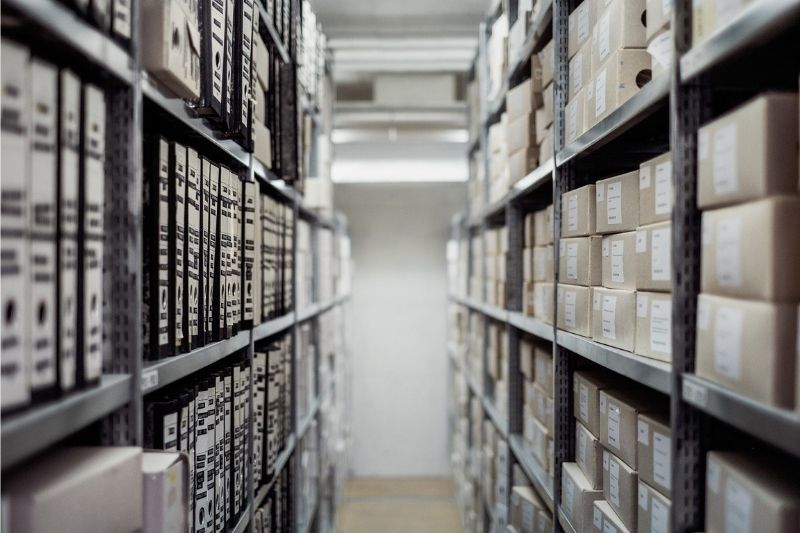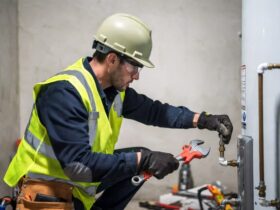No products in the cart.
7 Ways Warehouse Efficiency Can Be Improved

The warehouse is an integral part of any modern business. It’s not just a place to store and organize goods, but also where the majority of operations take place. This makes it crucial that warehouses are as efficient as possible – in order to maximize productivity and profitability. This means there is always something that can be done to improve warehouse efficiency. The main aspects of warehousing are storage, picking and moving goods around the warehouse, processing them into new orders, or packing them up for shipment. Let’s take a look at some ways to improve warehouse efficiency.
Getting New Equipment
When a warehouse is struggling with space problems, the best way to improve efficiency is to simply add more space. To do this in an efficient manner, you will need to add new equipment that gives you the same productivity but requires less ground area. Since warehouses are constantly evolving from manual labor into mechanized operations, with heavy use of technology and automation, new equipment is always available. Getting things like cartoner equipment, palletizers, sortation machines, and high-speed conveyors will free up more space for storage and increase capacity. This in turn will allow more items to be stored and put into rotation, which means less space is needed for storage. Of course, you can’t just add equipment like this overnight; it needs time to pay for itself and increase your profits.
Improving Storage Methods
One of the main aspects of warehousing operations is storage. The most common warehouse tasks are storing goods in racks, keeping them on pallets, or ordering items for users who pick them up later on. There are several ways to optimize storage methods; one way is to use special containers for order picking. This allows all products used for a particular order to be stored together so they can be easily found by the next member of staff assigned to pick them up. This saves time because it’s faster than having every product mixed in with other products and takes up less space than keeping everything in boxes or racks.
Using Space Efficiently
Many warehouses have storage locations located far from the actual picking and packing stations. This is because the company expanded over time, and while this seems like a good idea at first, it can be incredibly unintuitive and inefficient. When these kinds of scenarios take place, the warehouse becomes disorganized and workers may not know what items are where or how to get to them. They may have to search for products, resulting in wasted time and less overall productivity. Making warehouses more organized is the key to improving efficiency.
Organizing Workstations
Organizing workstations for warehouse staff is another great way to improve efficiency. The most common mistake that warehouses make here is not having enough space and work areas to keep everything organized. Having well-labeled storage racks and shelves with plenty of space will allow warehouse staff to find items quickly and put them back in their proper place after using them. Having everything in its right place also allows the warehouse manager to keep better track of what is where and who has used which items. This can be especially useful when using more sophisticated equipment that requires training before it can be used. Don’t forget about cable management to reduce damage and hazards within warehouses and office spaces. Using XLR Cable Management can allow you to keep your workspace organized and clean despite the number of cables you require.
Adopting Enabling Technology
Warehouses are always looking for new technology that improves productivity or reduces costs. Using technology that supports warehouse management systems is one great way to improve efficiency. From automated palletizers to mobile workstations, there are many different ways to use technology to improve the warehouse experience for both staff and customers.
New technology can also help with inventory management. Software that tracks what is in and out of stock and helps with maintenance and order picking will speed up the entire process and reduce errors. Additionally, cloud-based transport management systems provide real-time updates on the location of goods, allowing managers to accurately forecast demand. You can click here for more info regarding these systems and see how they can be beneficial. By using technology that has proven itself in other industries, warehouses can improve their efficiency to an even greater extent.
Optimizing Labor Efficiency
The majority of time spent in warehouses is on labor operations, even more than moving pallets around or using equipment to store items. This means that optimizing labor efficiency is one of the most important ways to improve warehouse productivity. Optimizing labor means giving your staff enough breaks, training all new employees so they can do their job right, and keeping track of staff performance.
Labor efficiency is especially important when it comes to order picking. Using specialized containers and specially designed equipment for this task will make the job faster and easier, but only if workers are trained well enough to use them efficiently. Allowing staff time to take breaks is also a good idea because fatigue is a major cause of errors in warehouses.
Lean Inventory
The final way to improve warehousing productivity is by going with a lean inventory system. This approach helps warehouses reduce waste and makes sure that everything has a place. The idea behind it is to make as much space as possible available for storage, which means using the right equipment for each job and getting rid of anything unnecessary.
Warehouses can also apply the lean inventory approach to orders. This means producing goods in batches that are as small as possible and only making them when there is a customer order for them. It also means making sure that everything is available on hand before an order can be fulfilled. This will result in much less waste and much faster order fulfillment.
Warehouse efficiency can be improved by adopting new technology, organizing workstations, optimizing labor efficiency, and lean inventory. These are all important steps to improving productivity for the warehouse staff as well as customers in general. There are many different ways to apply these concepts to warehouse operations, so it is important for managers or owners of warehouses to think about what will work best for their specific facilities. If you want to take your warehousing operations up a notch or two then now is the time to start thinking about how these recommendations could apply to your business! We hope this article was helpful! Good luck improving your business!















Leave a Reply